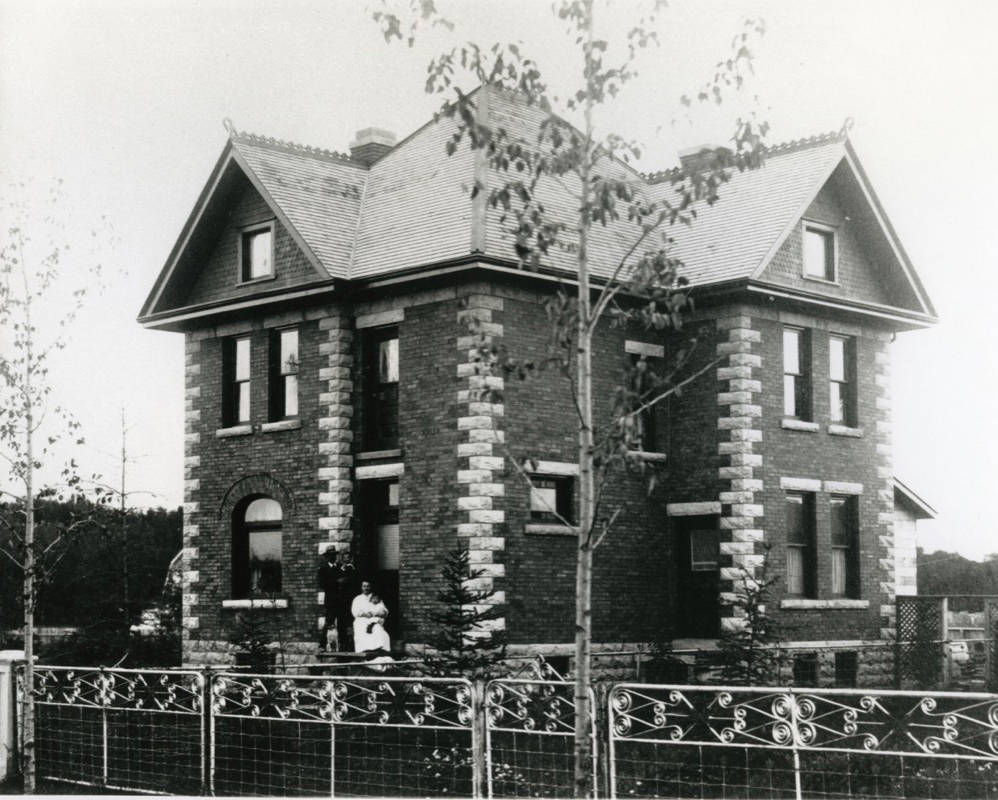The traditional fresh fruit and apple season is underway again. One of the most iconic of the world’s apple varieties is Canadian – the McIntosh – and will hit its peak again this fall.
The McIntosh is wonderful all-purpose apple and is great for both cooking and eating raw. It was also the inspiration for one of the best known names used by the Apple computer company (albeit re-spelled as MacIntosh for trademark and branding purposes).
The origins of the McIntosh apple go back to 1811 when John McIntosh discovered an apple sapling on his farm at Dundela, Ontario.
He transplanted the tree next to his house and found it produced outstanding fruit. Originally, that fruit was known as ‘Granny’s Apple’ because of the care and attention given to the tree by John’s wife, Hannah.
John McIntosh’s sons were gifted tree grafters. They were the ones to turn the cultivar into a commercial variety. As the 19th century progressed, the apple was renamed ‘McIntosh Red’. By the turn of the last century, it was widely popular in Canada.
The variety got a huge boost during the brutal winter of 1933-1934, when large numbers of Baldwin apple trees in New England were killed. Many of the orchard owners planted McIntosh trees to replace them.
While the story of the McIntosh apple and its Canadian origins is frequently told, what is often overlooked is the Red Deer connection. Julius McIntosh, a great grandson of John McIntosh, was a long-time highly respected resident of the City.
Julius McIntosh was born in Owen Sound, Ontario in April 1874.
He trained as a bricklayer. When he turned 16, he went to western Canada to explore the opportunities of the emerging frontier. Initially he lived and worked in Winnipeg, before returning to Owen Sound.
In 1900, he moved to Alberta. He decided to settle in the Red Deer area. He took out a homestead on the Medicine River in the West Country, but that did not work out very well. He was soon back in Red Deer, where the fledgling town was experiencing a strong construction boom.
Julius, or Mac as he was commonly known, initially lived at the Alexandra (later Park) Hotel on Ross Street. In 1905, he married Anna Krause, daughter of Frederick and Frederica Bolze Krause, the owners of the hotel.
Mac then built a substantial brick house on Ross Street, east of Parkvale (47) Avenue. Mac wanted the house to be a showpiece of his abilities as a master bricklayer and tradesperson, as well as the family home.
Brick was a popular building material in the years prior to the First World War, not only because of its look, but also because of its fire-protection properties. Mac therefore had a prominent role in the construction of most of the prominent public buildings and substantial residences from that era.
There was a substantial lull in construction during the First World War and during the post-War economic depression. Consequently, the Mac and Annie moved their family to a farm in the Springvale district south east of Red Deer.
In 1945, Mac retired from farming and the family moved back to the brick house on Ross Street. Mac resumed brick-laying and continued in his trade until he turned 83.
Mac and Annie were avid gardeners. Mac continued to dig the garden each year until he was in his early 90s. He was also frequently seen up in his apple trees, pruning them.
Mac passed away in 1973 at the age of 99 and Annie passed away three years later. The old family home was eventually turned into the McIntosh Tea House and then a bed and breakfast. The house is a registered historic site. It is now the location of the Solorzano Spa.



